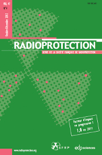
RADIOPROTECTION
Scope & Guideline
Exploring the nexus of health, environment, and nuclear energy.
Introduction
Aims and Scopes
- Radiation Safety in Medical Imaging:
The journal emphasizes studies on radiation safety practices in medical imaging, including the assessment of radiation doses, the establishment of diagnostic reference levels, and training for medical personnel. - Public Awareness and Education on Radiation Risks:
A significant focus is placed on enhancing public understanding of radiation risks, particularly in the context of nuclear accidents and medical procedures, aiming to improve risk perception and communication strategies. - Research on Radiation Effects and Dosimetry:
The journal publishes research on the biological effects of radiation, dosimetry techniques, and methodologies for accurate dose assessment to inform safety protocols and regulations. - Regulatory Frameworks and Best Practices:
It addresses the development and evaluation of regulatory frameworks for radiation protection, including international standards and local practices, ensuring compliance and safety in various sectors. - Emergency Preparedness and Response:
The journal covers topics related to emergency preparedness for nuclear and radiological incidents, focusing on medical preparedness, risk assessment, and recovery strategies.
Trending and Emerging
- Impact of Nuclear Accidents on Public Health:
The journal has seen a rise in studies examining the long-term health effects and public perceptions following nuclear accidents, particularly the Fukushima incident, indicating a growing concern for the social and psychological aspects of radiation exposure. - Advancements in Dosimetry and Imaging Technologies:
There is an increasing focus on the development and application of advanced dosimetry techniques and imaging technologies aimed at optimizing radiation safety in medical settings, reflecting the rapid technological advancements in healthcare. - Integration of Artificial Intelligence in Radiation Protection:
Emerging research on the role of artificial intelligence in enhancing radiation protection measures and decision-making processes is becoming more prevalent, indicating a forward-looking approach to integrating technology into safety protocols. - Radiation Protection for Vulnerable Populations:
There is a growing emphasis on radiation protection strategies tailored for vulnerable groups, such as children and pregnant women, highlighting an increased awareness and concern for specific demographic needs in radiation safety. - Multi-disciplinary Approaches to Radiation Risk Assessment:
An emerging trend is the adoption of multi-disciplinary strategies in assessing radiation risks, combining insights from public health, environmental science, and engineering to create comprehensive safety frameworks.
Declining or Waning
- Historical Perspectives on Radiation Protection:
There has been a noticeable decrease in publications focusing on historical analyses of radiation protection practices and policies, suggesting a shift towards more contemporary and practical applications. - General Radiation Safety Training for Non-Specialists:
The emphasis on broad, non-specialized training for general practitioners and non-experts appears to be waning, possibly in favor of more targeted training for specific professions and contexts. - Environmental Radiation Monitoring:
Research specifically focused on environmental radiation monitoring, while still relevant, has seen less frequent publication, indicating potential shifts towards more immediate health-related concerns and practices.
Similar Journals
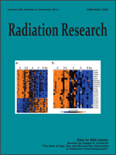
RADIATION RESEARCH
Elevating the discourse in biophysics and radiology.RADIATION RESEARCH is a prestigious journal published by the RADIATION RESEARCH SOC that serves as a vital resource for professionals and researchers in the fields of biophysics, radiation science, and radiology. Established in 1954, this journal has consistently advanced the study of radiation's effects on health and the environment, bridging fundamental and applied research. It boasts an impressive impact factor reflected in its quartile rankings, including Q2 in Biophysics and Q1 in Radiation, making it a highly regarded publication within its discipline. Researchers will find valuable insights through rigorous peer-reviewed articles that explore innovative methodologies and findings related to radiation exposure, imaging technologies, and the biological consequences of radiation. Although the journal does not currently offer open access, it remains a vital reference for academia and industry, fostering a deeper understanding of radiation sciences and their implications for future research and public health.

RADIATION PHYSICS AND CHEMISTRY
Connecting Fundamental Research with Practical ApplicationsRADIATION PHYSICS AND CHEMISTRY, published by Pergamon-Elsevier Science Ltd in the United Kingdom, stands as a leading journal in the field of radiation studies, bridging fundamental research and practical applications. With an impressive 2023 Scopus Rank of 11 out of 58 in the Radiation category, reflecting an 81st percentile ranking, the journal maintains a robust reputation within the scientific community. The journal focuses on the experimental and theoretical aspects of radiation physics, chemistry, and their interdisciplinary applications, providing critical insights that aid the advancement of knowledge in various domains, including nuclear energy, materials science, and healthcare. Although open access options are not available, the journal garners substantial readership and engagement from researchers, professionals, and students alike, as it publishes innovative studies and reviews from 1985 through to its anticipated conclusion in 2025. The ISSN for the journal is 0969-806X, with the E-ISSN being 1879-0895, ensuring global accessibility to cutting-edge research in radiation science.

Nuclear Physics and Atomic Energy
Connecting researchers to the world of nuclear discoveries.Nuclear Physics and Atomic Energy is a reputable open-access journal that focuses on the fields of nuclear physics and high-energy physics, providing a forum for researchers, professionals, and students to share their findings and advancements. Published by the Institute of Nuclear Research, National Academy of Sciences of Ukraine, this journal has been committed to disseminating knowledge since its inception in 2006, ensuring that scientific advancements remain accessible to a global audience. With an ISSN of 1818-331X and an E-ISSN of 2074-0565, the journal features a diverse array of articles that span the continued exploration and application of nuclear phenomena. Although currently categorized in the Q4 quartile for Nuclear and High Energy Physics in 2023, the journal is steadily working towards increasing its impact and engagement within the academic community. With a Scopus rank of #74 out of 87 in its category, it serves as a valuable resource for advancing crucial research in a vital scientific area. Researchers are encouraged to contribute their innovative studies to foster collaboration and knowledge sharing in this dynamic field.
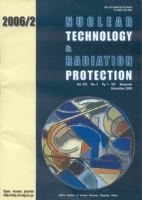
Nuclear Technology & Radiation Protection
Illuminating the path to efficient nuclear technology.Nuclear Technology & Radiation Protection is a distinguished open-access journal published by the VINCA Institute of Nuclear Sciences, Serbia, dedicated to advancing knowledge in the fields of nuclear energy and radiation safety. Since its inception in 2002, the journal has been an essential resource for researchers, professionals, and students, offering a platform for the dissemination of high-quality research that contributes to the safe and efficient use of nuclear technology. With an impressive Q2 ranking in both the Nuclear Energy and Engineering and Safety, Risk, Reliability and Quality categories for 2023, the journal reflects a commitment to excellence and relevance within its scope. It serves as a pivotal forum for sharing innovative findings, addressing current challenges, and contributing to the global discourse on nuclear safety and technology. The journal is indexed in Scopus, enhancing its visibility and impact in the academic community. By facilitating unrestricted access to its articles, Nuclear Technology & Radiation Protection continues to foster collaboration and engagement among scholars in the nuclear science domain.

International Journal of Radiation Research
Pioneering Insights in Medical Radiation ApplicationsThe International Journal of Radiation Research, published by the IJRR-IRANIAN JOURNAL RADIATION RES, serves as a critical platform for researchers and professionals in the fields of radiology, nuclear medicine, and imaging technology. Since its inception in 2003, this peer-reviewed, open-access journal has focused on disseminating significant findings and advancements, contributing to the global discourse on radiation research. With an ISSN of 2322-3243, the journal offers valuable insights into emerging technologies and methodologies, maintaining a commitment to enhancing the understanding and application of radiation in medical science. Although currently positioned in the Q4 category across its scopes, the journal strives to elevate its impact by promoting high-quality research and innovative practices. The journal is accessible to a wide audience and encourages submissions from scholars worldwide, directly supporting the advancement of knowledge in radiological and ultrasound technology. For those seeking to explore and contribute to this dynamic field, the International Journal of Radiation Research represents an invaluable resource.

Journal of Radiation Protection and Research
Navigating the Future of Radiation Health ResearchJournal of Radiation Protection and Research, published by the Korean Association of Radiation Protection (KARP), serves as a pivotal platform for disseminating innovative research in the fields of radiation safety and health-related issues. With an ISSN of 2508-1888 and an E-ISSN of 2466-2461, this South Korea-based journal aims to bridge the gap between scientific research and practical application, emphasizing radiation protection, environmental health, and public safety. Though categorized in Q4 for Health, Toxicology and Mutagenesis, and Q3 for several other scopes as of 2023, the journal is dedicated to publishing high-quality studies that contribute to the improvement of safety standards and methodologies in radiation practice. The journal also provides valuable insights for practitioners in the healthcare and environmental sectors, making it an essential resource for researchers, professionals, and students alike who aspire to advance their understanding and application of radiation science. As the field evolves, so does the Journal of Radiation Protection and Research, which seeks to foster a collaborative and innovative academic community dedicated to ensuring safe and effective radiation use.
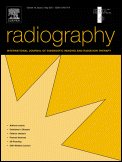
Radiography
Elevating Radiology Through Cutting-Edge ResearchRadiography is a premier academic journal published by ELSEVIER SCI LTD that focuses on the vital disciplines of radiology, nuclear medicine, and imaging technology. With an ISSN of 1078-8174 and an E-ISSN of 1532-2831, this journal has earned an impressive reputation, consistently ranking in the top quartiles across multiple categories in the 2023 Scopus rankings, including Q1 in Assessment and Diagnosis and Q1 in Research and Theory. Spanning decades of research from 1995 to 2024, Radiography provides a platform for cutting-edge studies, innovative techniques, and clinical advancements, making it essential reading for researchers, healthcare professionals, and students engaged in the fields of radiological sciences. Operating from the United Kingdom, and while not an Open Access journal, it offers a broad array of access options through institutional subscriptions, ensuring that critical research is available to stakeholders in the health professions. The journal's focus on both theoretical and practical aspects further underscores its role as a key resource in enhancing diagnostic practices and improving patient outcomes in the healthcare industry.
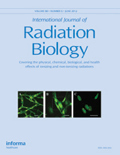
INTERNATIONAL JOURNAL OF RADIATION BIOLOGY
Pioneering Discoveries in Radiation ApplicationsINTERNATIONAL JOURNAL OF RADIATION BIOLOGY, published by Taylor & Francis Ltd, has established itself as a premier forum for the dissemination of innovative research related to radiation biology, covering emerging topics that are crucial within the fields of radiology, nuclear medicine, and ultrasound technology. With an ISSN of 0955-3002 and an E-ISSN of 1362-3095, this journal spans over six decades, from its inception in 1959 to 2024, reflecting a rich history of scholarly contribution and a dynamic approach to addressing current challenges in the discipline. Its reputation is highlighted by its Q2 rankings in both Radiology, Nuclear Medicine and Imaging and Radiological and Ultrasound Technology for 2023, underscoring its relevance in a competitive academic landscape, with Scopus rankings placing it in the top tier of its category. While operating under a traditional access model, the journal aims to connect researchers, professionals, and students, facilitating the advancement of knowledge and fostering a deeper understanding of the impact of radiation in various medical applications. The journal plays an essential role in shaping future research directions and enhancing clinical practices globally.

PHYSICS IN MEDICINE AND BIOLOGY
Transforming Diagnostics and Therapies with PhysicsPHYSICS IN MEDICINE AND BIOLOGY is a prestigious journal published by IOP Publishing Ltd, with a storied history dating back to 1956 and extending through 2024. This internationally recognized journal caters to the interdisciplinary fields of medical physics and bioengineering, making significant contributions to the research and development of advanced diagnostic and therapeutic technologies. It holds an impressive Q1 ranking in both Radiological and Ultrasound Technology and Radiology, Nuclear Medicine and Imaging categories, reflecting its critical role in disseminating high-quality research. With a significant focus on merging the principles of physics with advancements in medicine, PHYSICS IN MEDICINE AND BIOLOGY serves as an essential resource for researchers, professionals, and students alike, fostering innovation and enhancing collaboration in the healthcare sector. Although the journal is not currently open access, it maintains robust participation in the Scopus database, ranking #62 out of 333 in Radiology, Nuclear Medicine and Imaging and #17 out of 63 in Radiological and Ultrasound Technology, signifying its influence and reach within these disciplines.

Radiation Detection Technology and Methods
Innovating Detection for a Safer TomorrowRadiation Detection Technology and Methods is a prominent academic journal published by Springer Singapore Pte Ltd, dedicated to advancing the field of nuclear and high-energy physics, as well as nuclear energy and engineering. Established in 2017, this journal provides a platform for the dissemination of pioneering research and innovative methodologies in radiation detection technology. As of 2023, it holds a commendable Q2 ranking in both the categories of Nuclear and High Energy Physics and Nuclear Energy and Engineering, underscoring its significance in fostering scholarly discourse within these vital fields. With ISSN 2509-9930 and E-ISSN 2509-9949, the journal aims to cater to a diverse audience of researchers, professionals, and students, emphasizing open access to knowledge. The journal's contributions are particularly crucial for those engaged in the development of safer and more efficient radiation detection techniques, ultimately bridging the gap between theory and practical applications in energy security and health physics. For researchers seeking a dedicated outlet for their work, Radiation Detection Technology and Methods represents an invaluable resource and an opportunity to influence the future of radiation science.